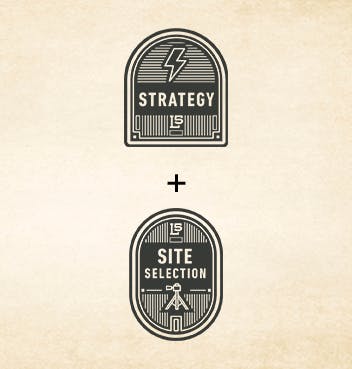What You Need to Know About ITMs: Next Level Strategy

Interactive Teller Machines (ITMs) have come a long way from their humble beginnings, transforming how banks and credit unions interact with their customers. But rollouts can feel intimidating if you’re not sure how ITMs fit into your branch network. Let’s break down what ITMs do, how they benefit your staff and customers, and how to make smart deployment decisions.
What Were ITMs Meant to Do?
When ITMs first hit the scene, the idea was pretty straightforward—they were designed to handle 80-90% of all the standard transactions you’d normally go to a teller for. Think about it: paying a mortgage or loan, transferring funds, making withdrawals or deposits, paying on a credit card, ordering a replacement debit card, or even snagging a cashier’s check. That’s a lot of functionality packed into a single machine.
With all of that, ITMs were supposed to offer a full-service alternative to the teller window, helping customers get what they needed without stepping inside a branch. Simple, right? But as ITMs have matured, they’ve done far more than replacing basic teller tasks—they’ve shaken up what the branch itself can be.
From Transactions to Transformations
One of the standout benefits of ITMs today is how they can change the role of your branch’s staff. By handling routine transactions, ITMs free up your employees to focus on what really matters—building relationships. Now, your tellers can spend their time having meaningful conversations with customers, helping them set financial goals, and solving problems.
Instead of being stuck behind a counter processing deposits all day, staff can offer personalized service that makes customers feel valued. They can step into a more advisory role, which strengthens customer loyalty in an industry where trust is everything. ITMs aren’t just about efficiency—they’re about elevating the customer experience.
Too Many Choices, Not Enough Clarity
Here’s where it gets tricky—choosing the right technology for your branch network can feel like navigating a maze. There are so many different types of ITMs with all kinds of features and integration levels. How do you choose the one that’s best for you?
Unfortunately, some vendors don’t make it any easier. They often focus on making the sale, not necessarily recommending the ideal solution for your needs. That’s why it’s so important for you to take a step back and look at the big picture. What are your customers’ preferences? What kinds of transactions are they most likely to need? Answering these questions is critical before making any big investments.
Ready to Grow?
Reach out and set up a launch call to learn about how we partner to enable the next
phase of your credit union's growth.
What About Two-Way Video?
One feature you might want to consider is two-way video. Think of it as bringing the branch’s expertise directly to the customer—without needing that person physically onsite. Customers love the ability to connect with someone face-to-face (well, screen-to-screen), whether they’re applying for a loan, asking about their accounts, or solving a complex issue.
And here’s the thing—if the customer can’t connect with the right person during their visit to your branch, the odds they’ll come back aren’t great. Studies show only about 6% of people will revisit a branch if their questions weren't answered the first time. With ITMs, you can address that issue by ensuring customers can talk to someone who has the answers they need—even if that person isn’t physically in the building. That’s a game-changer for providing consistent, high-level service.
Only 6% percent of people will revisit your branch if their questions aren't answered the first time.
Setting Your Deployment Strategy
Dropping a few ITMs into random spots around your network isn’t going to cut it. Success depends on intentional placement and a strategy that aligns with your institution’s goals. Think about putting ITMs where they’ll deliver the most value—high-traffic areas like drive-thrus, vestibules, or even remote kiosks in underserved neighborhoods. The key is making them accessible, visible, and easy to use.
But placement isn’t the whole story. You need a solid plan to help both customers and staff get on board with the new technology. Show customers how ITMs work through clear signage, quick tutorial videos, or friendly in-branch demos. At the same time, train your staff to act as ITM ambassadors, ready to answer questions and encourage confidence in using this tech.
Don’t Underestimate the Importance of Staff When Implementing ITMs
When implementing ITMs, your branch staff becomes the bridge between innovation and experience. While many members are open to using new tech, they still need guidance—especially with features like two-way video or account servicing. Staff should be fully trained and ready to step in, not as tech troubleshooters, but as trusted advisors who create confidence in the technology. Every assist isn’t a disruption—it’s a chance to build loyalty, deepen relationships, and turn a moment of uncertainty into one of connection.
Why ITMs Should Be in Your Future
ITMs are redefining what banking can look like. They save time and unlock efficiencies without sacrificing the personal touch that customers crave. By thoughtfully integrating ITMs within your network, you can reduce costs, expand reach, and stay competitive in a changing industry.
But the real magic lies in how ITMs allow branches to focus on what really sets them apart—the people. When staff are freed from simply managing transactions, they become relationship-builders, problem-solvers, and trusted advisors. That’s the kind of impact that goes far beyond machines—it’s what builds lifetime loyalty.
If you’re considering ITMs for your network, take the time to plan carefully. Understand your customers, choose the right features, and create a deployment plan that’s built for success. When done right, ITMs can become the perfect blend of efficiency and connection, reshaping how you serve your community.
This article first appeared on CUinsight.com.

